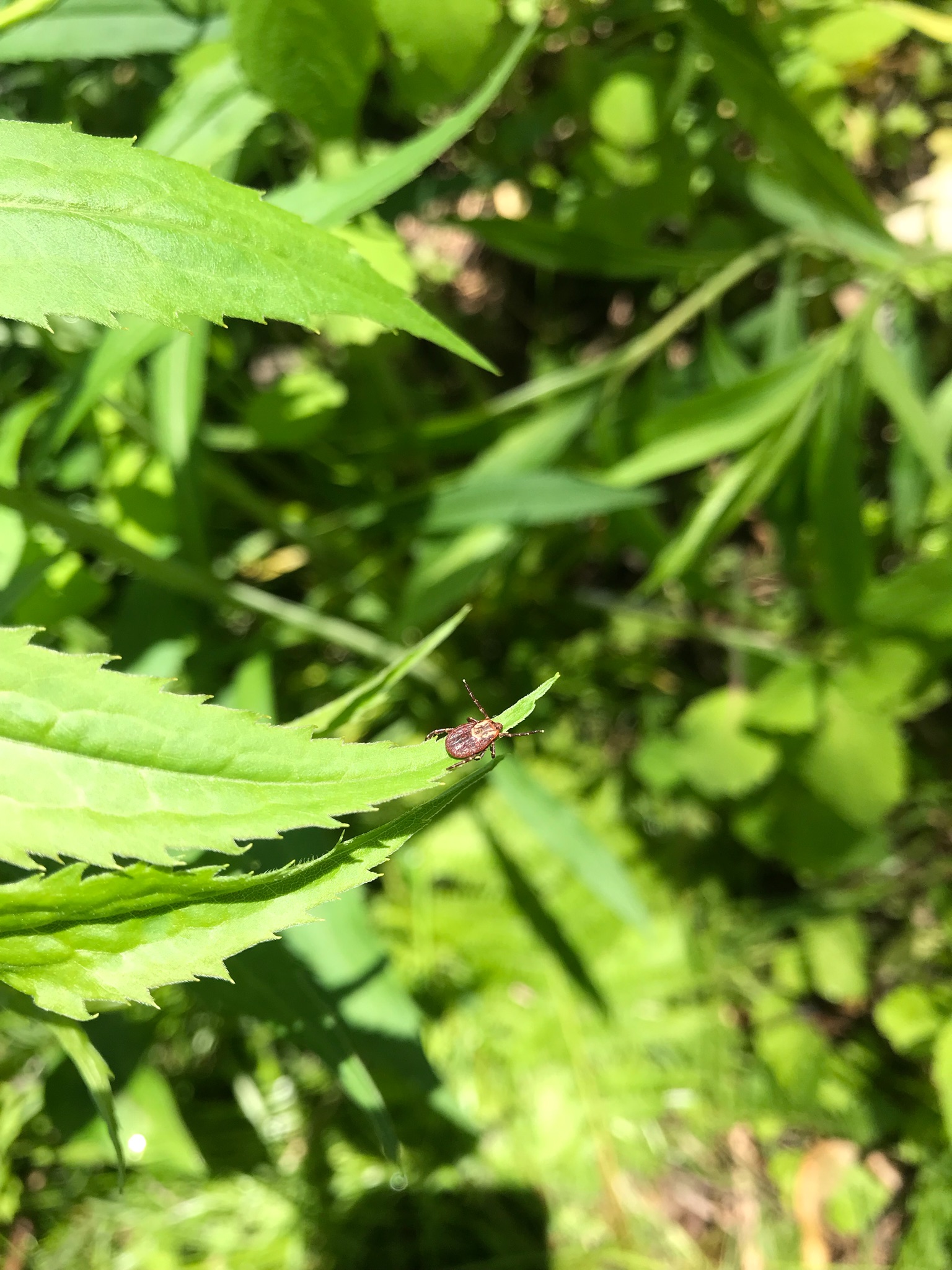Anatomy of the Adult Female Deer Tick
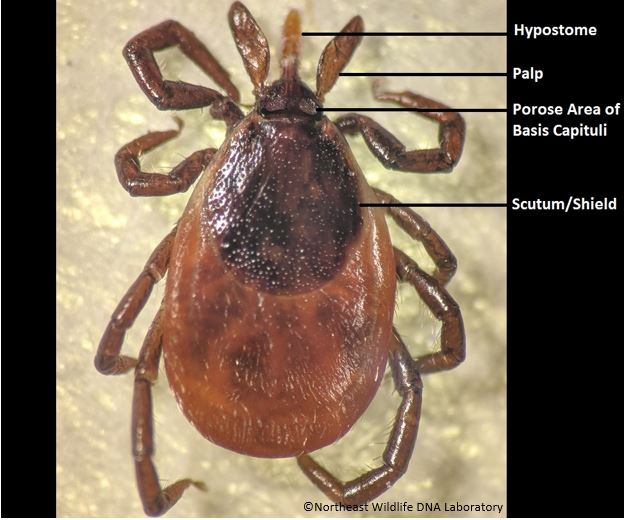
Hypostome: Barbed mouthpart injected into host to suck blood. Adult males will use the hypostome to fertilize adult females.
Palp: Used to detect a nearby host.
Porose area of Basis Capituli: Used as an identifying characteristic to determine tick species. Adult female deer ticks will have smaller porose areas than other tick species.
Scutum/Shield: Used as an identifying characteristic to determine tick life stage, species, and sex. Only nymph and adult female deer ticks will have a shield located on the top portion of the back. Deer ticks have black, oblong shields.
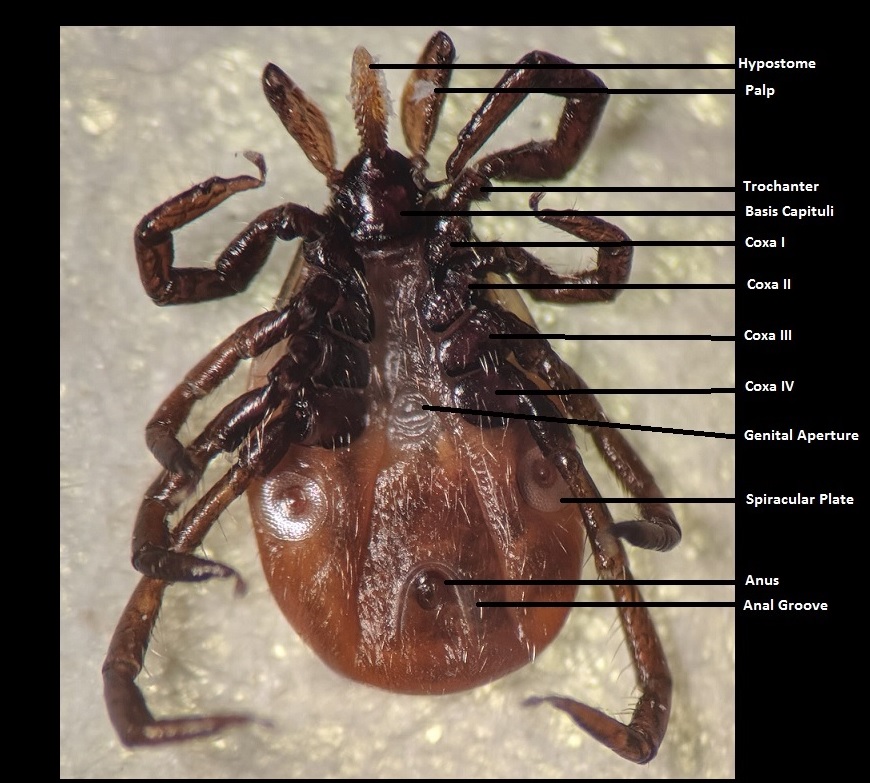
Basis Capituli: Attaches the mouthparts to the body. The basis capituli of a deer ticks will be straight at the bottom where it connects to the body and will be missing rounded humps on the top on either side of the hypostome. These characteristics are used in identifying the species.
Trochanter: Part of the leg that attaches to the coxa. Deer ticks will have trochanters without spurs. This characteristic can be useful in identifying tick species.
Coxa I-IV: Attach the trochanter of the leg to the body of the tick.
Genital Aperture: Where the adult male tick will insert his hypostome to mate and fertilize the adult female tick.
Spiracular Plate: Has glands that may be involved in regulation of water loss and air diffusion. Used as an identifying characteristic to determine tick species.
Anal Groove: Used to identify species of tick. Deer ticks (Ixodes scapularis) will have an anal groove that extends above the anus while other species of tick not in the genus Ixodes will have an anal groove that stays below the anus.
Actual Size of the Adult Female and Nymph Deer Ticks
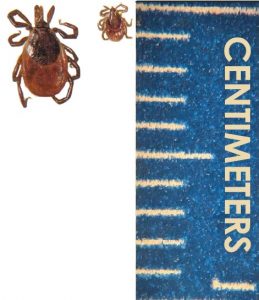 Understanding the difference in size between the adult and nymph deer ticks is an important part of identification. Knowing which life stage a deer tick is in helps to determine risk of disease. Nymph deer ticks have only fed once in their life and have less of a chance of carrying a disease than adult deer ticks who have fed twice.
Understanding the difference in size between the adult and nymph deer ticks is an important part of identification. Knowing which life stage a deer tick is in helps to determine risk of disease. Nymph deer ticks have only fed once in their life and have less of a chance of carrying a disease than adult deer ticks who have fed twice.
The adult female deer tick (left) is about .40cm long when measured from the tip of the mouthparts to the bottom of the abdomen. The nymph deer tick (right) is about .15cm long when measured from the tip of the mouthparts to the bottom of the abdomen.
Deer Tick Larvae
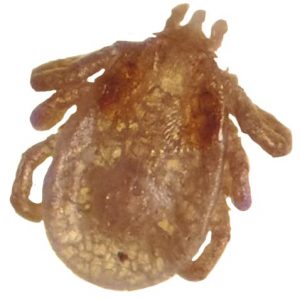
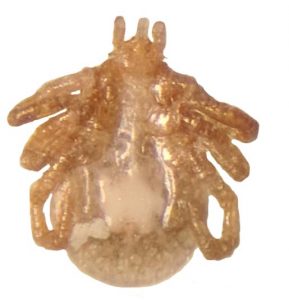
When deer ticks hatch from their eggs they are considered to be larva. Unlike deer tick nymph or adults, the larva only have 6 legs. Larva also have small shields that can be viewed under the microscope.
Lyme disease is unable to be passed from adult female ticks to their eggs therefore larvae are born without it. Since larva have not fed yet they are not at risk for transmitting Lyme. Unfortunately, there have not been enough studies to determine whether other tick-borne diseases are able to be passed from Adult female deer ticks to their eggs.
Adult Female Deer Tick Engorgement

Understanding tick engorgement is an important part of knowing your risk of disease transmission. Engorgement size estimates the amount of time a tick was feeding. Every tick borne disease requires a minimum length of attachment for transmission. The longer the tick is attached, the higher the risk for a disease to be transmitted. Rather then waiting 4-6 weeks for accurate human testing, this information can assist your physician in early diagnosis and treatment decisions.
As adult females and nymphs feed, their bodies become larger and their shields stay the same size. A scutal index can be used to estimate hours of engorgement by taking measurements of the width of the shield and the length of the body under a microscope.
